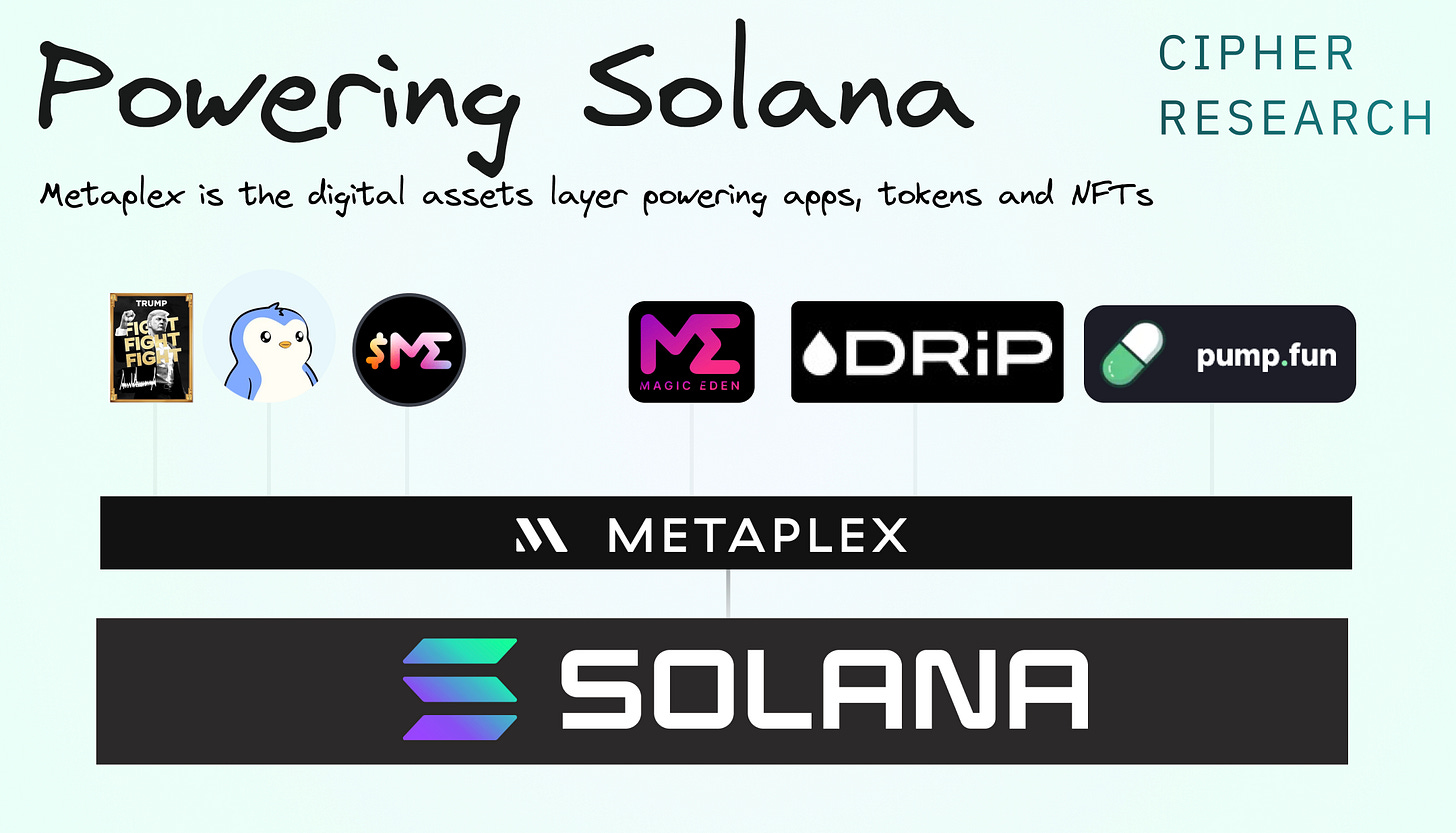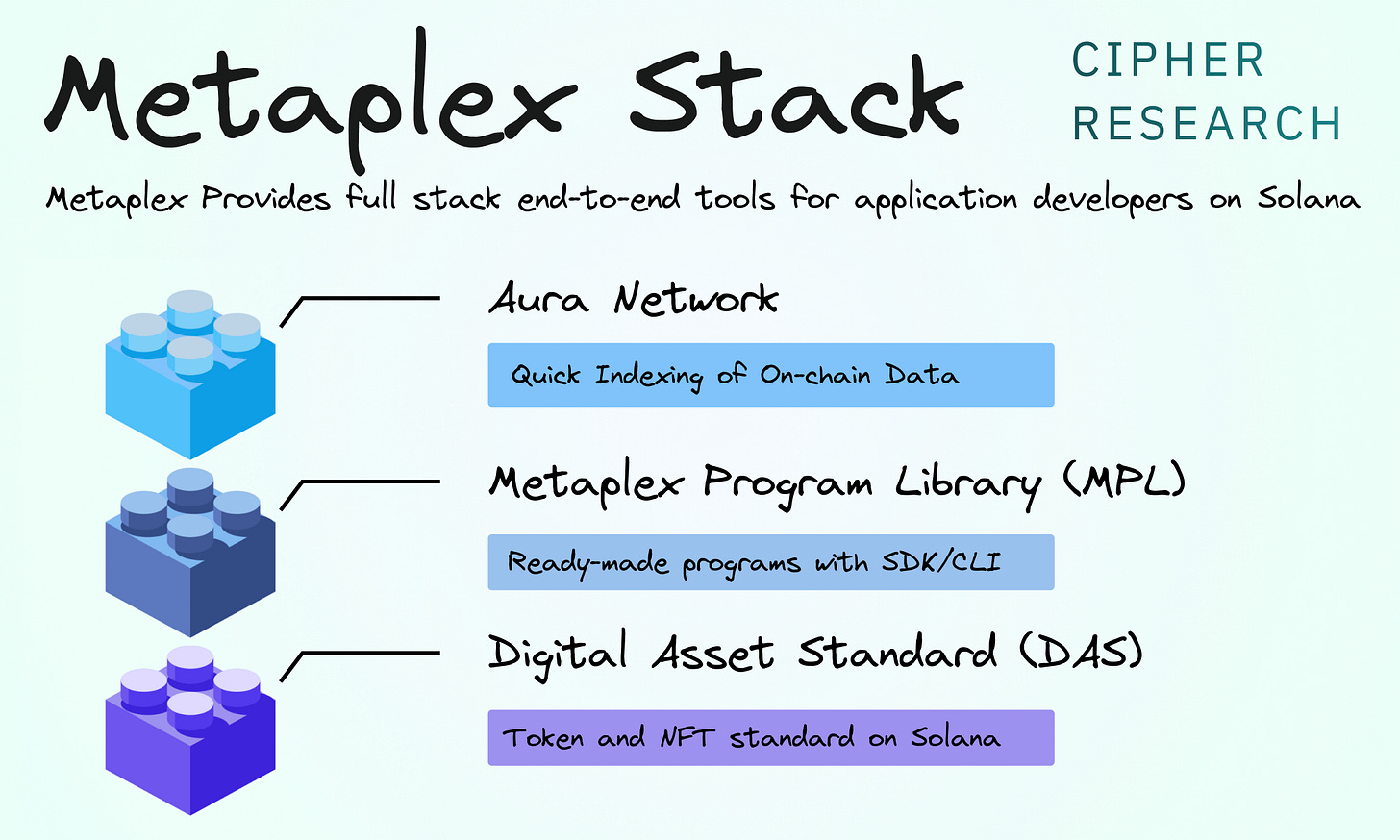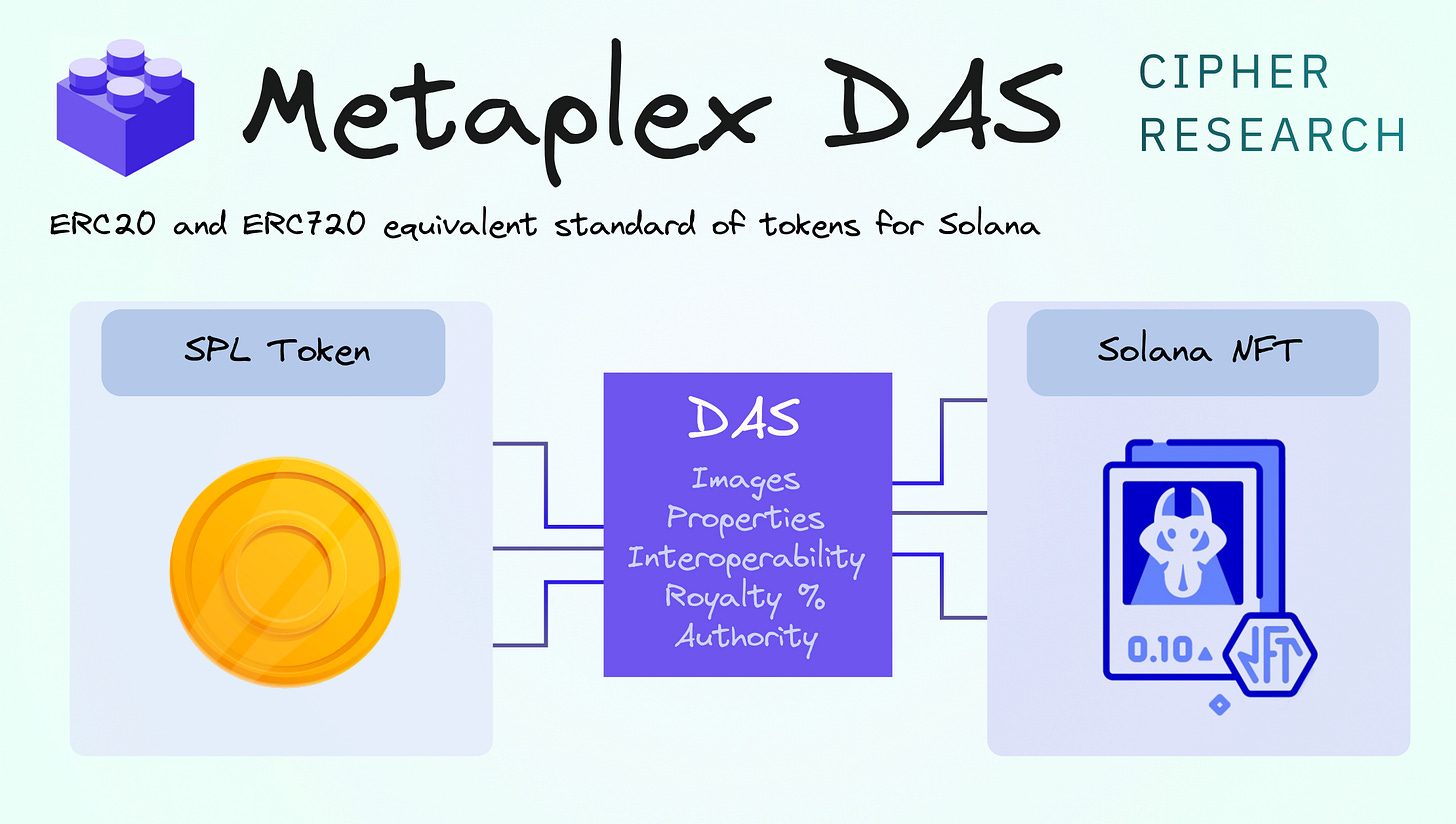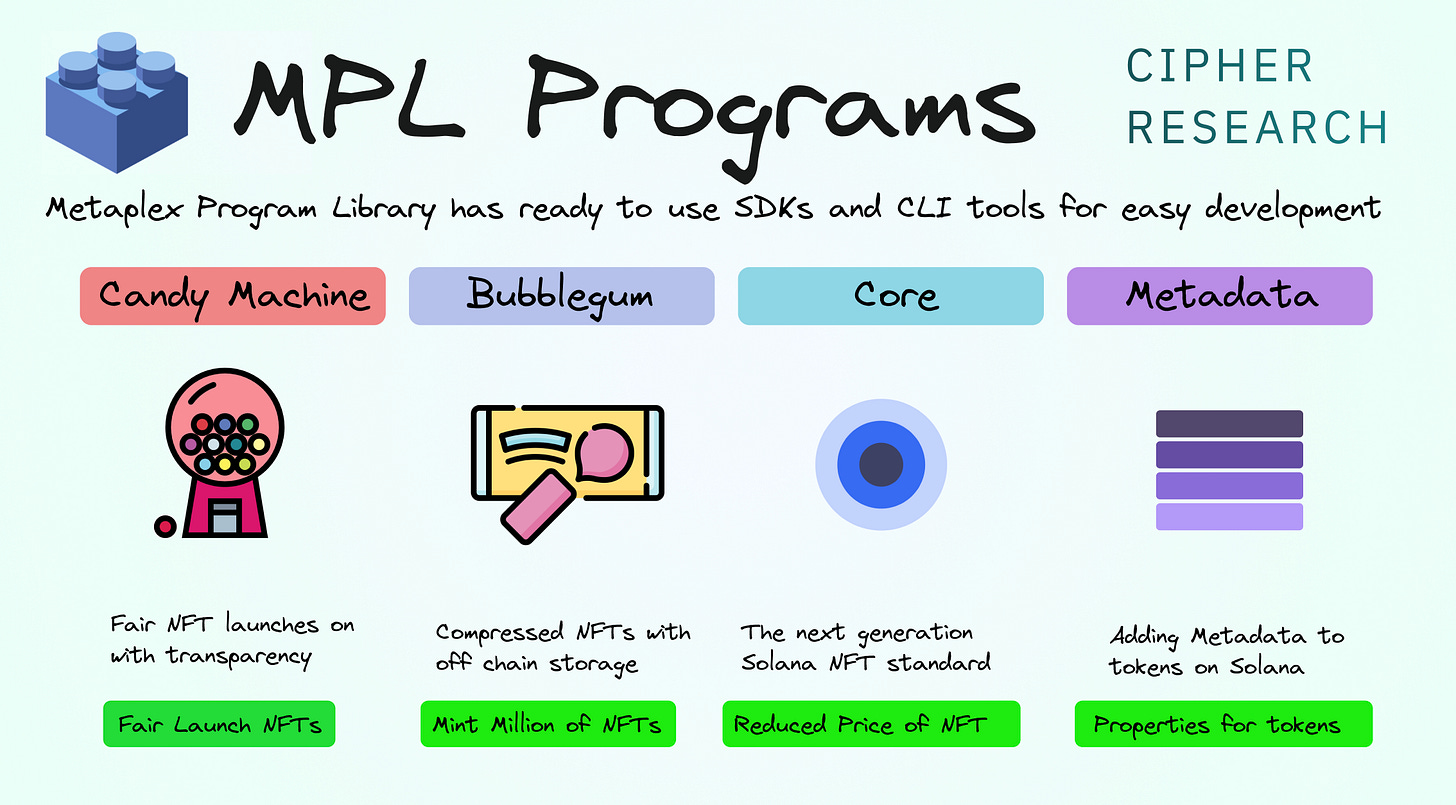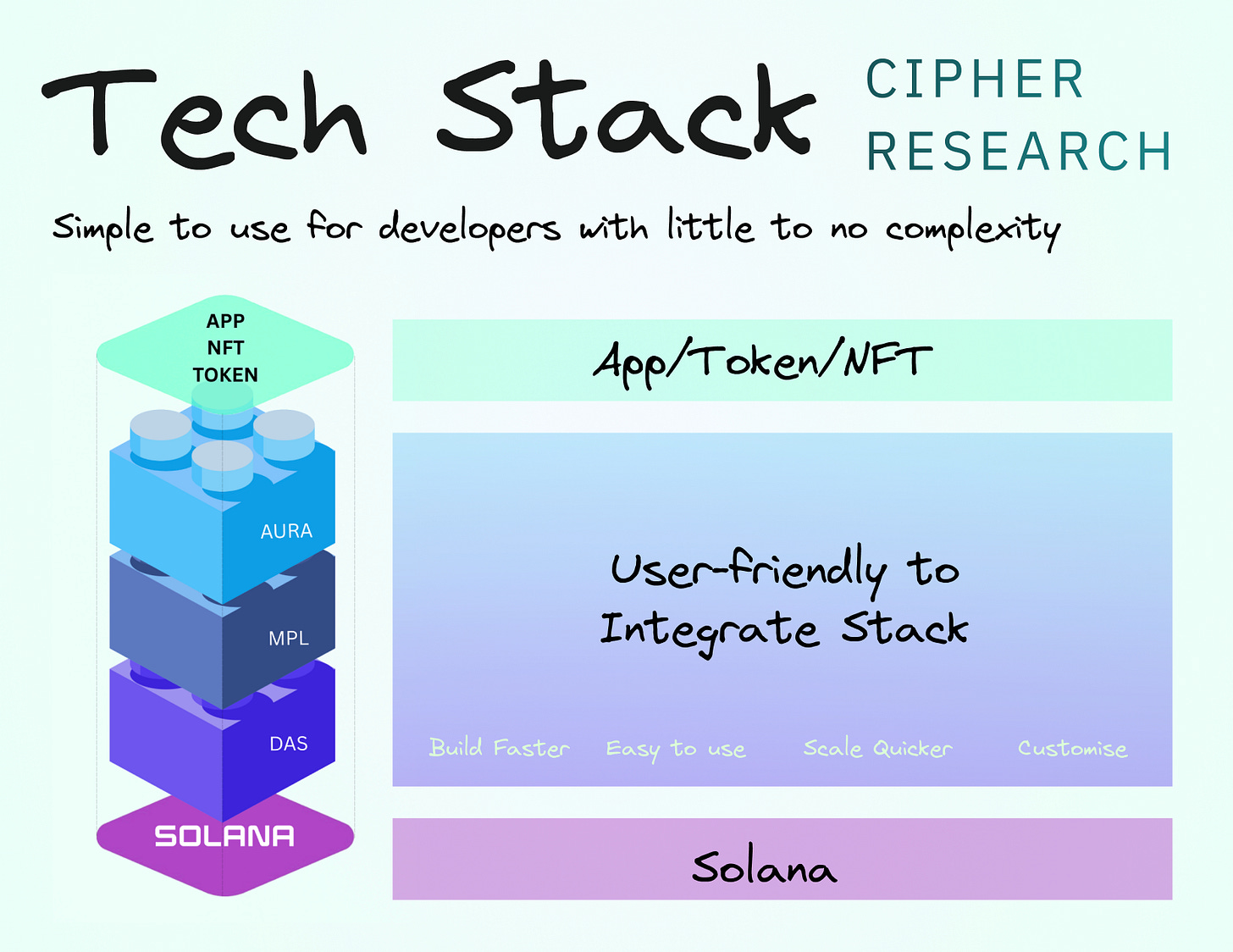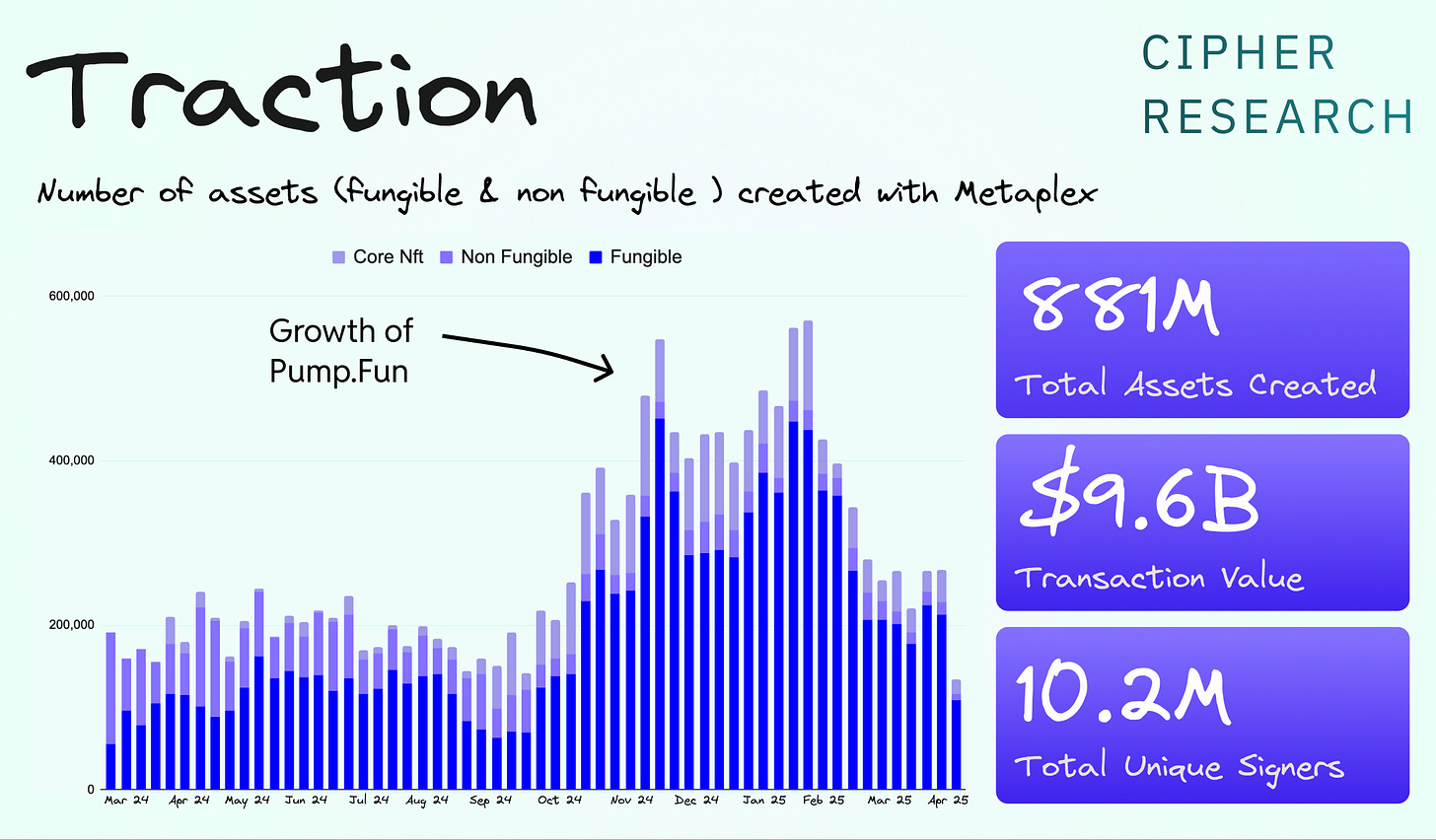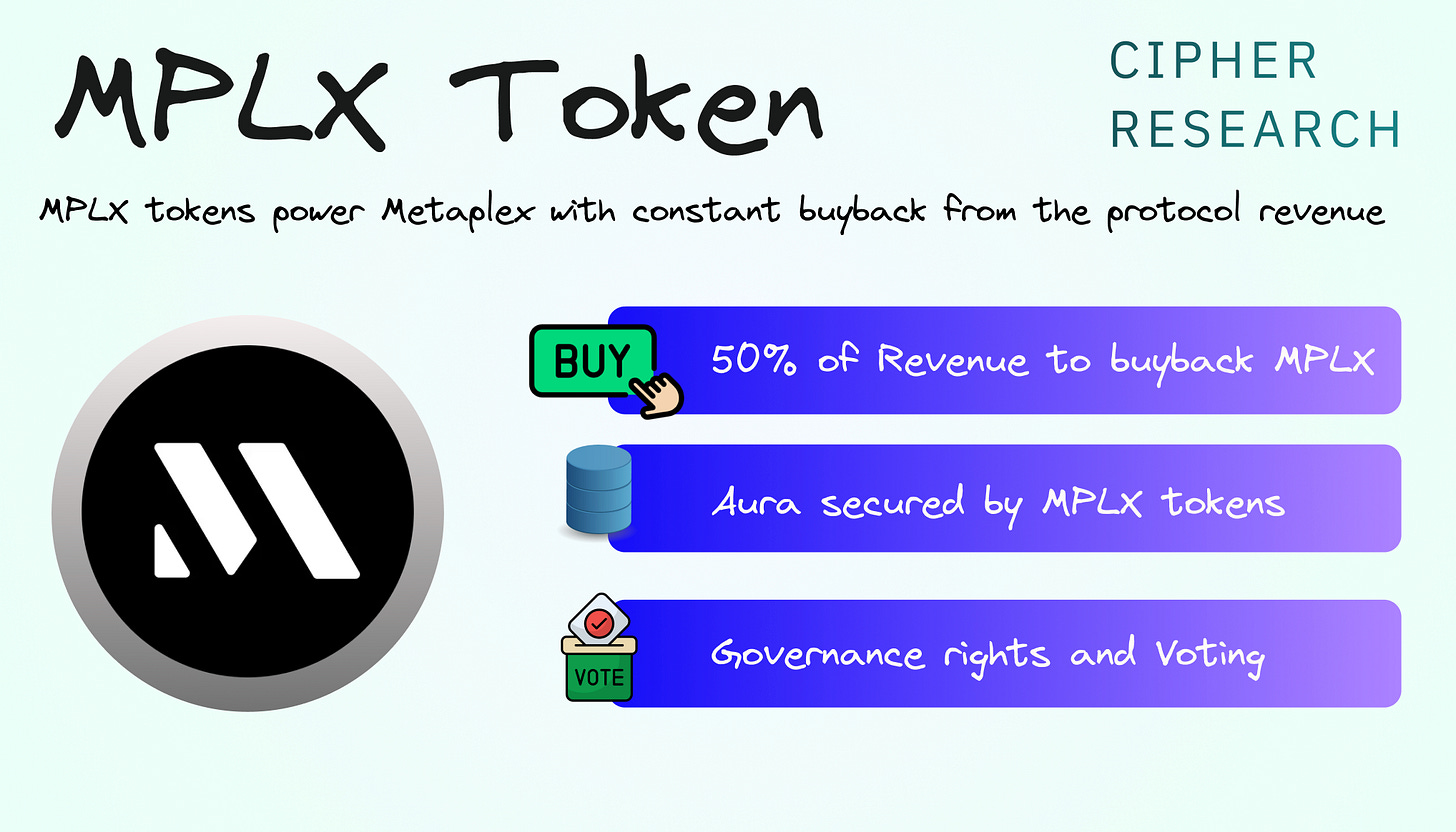If you’ve used Solana, chances are it felt effortless. You minted a token in seconds, aped into the latest meme coin, or grabbed an NFT off Magic Eden without thinking twice. Maybe you played with a new app or aped a hundred memcoins on pump.fun just for fun. No regrets (Maybe).
It was fast. It was cheap. It just worked. But have you ever wondered why?
Solana gets most of the credit for being fast and cheap and it should. But there’s something else at play here. Something deeper, quieter, and arguably just as important.
That something is Metaplex.
Most people have never heard of it. But if you’ve done anything with NFTs or tokens on Solana, you’ve been using Metaplex. It’s the invisible layer that turns raw blockchain infrastructure into usable, human-friendly experiences.
The thing that makes tokens show up in wallets, NFTs render properly in apps, and creators launch their projects without writing thousands of lines of Rust from scratch. It’s the digital asset protocol of Solana. And it’s everywhere.
So, what is Metaplex?
At its core, Metaplex is Solana’s digital asset layer, the protocol stack that standardizes how assets like NFTs and tokens exist on the chain.
Without it, wallets wouldn't be able to display your assets. Marketplaces couldn’t show you listings. Apps would break. It’s the invisible scaffolding holding the entire asset economy together.
Ethereum has ERC-20s and ERC-721s. Solana has DAS - Metaplex’s Digital Asset Standard.
DAS defines the essential data every asset needs to function: what it’s called, what it looks like, who owns it, how it behaves. This standard is what lets wallets instantly recognize an asset and render it correctly.
Without DAS, your wallet wouldn’t even know what it was looking at. It’s like the DNA of Solana assets.
But Metaplex isn’t just a standard. It’s a full development stack.
Beyond DAS, there’s the Metaplex Program Library (MPL) - a suite of open-source, audited smart contracts that make it easy for developers to build and deploy assets.
This includes tools like Candy Machine, the program behind fair NFT drops, and Token Metadata, which defines an asset’s identity on-chain.
There's Core, which handles general NFT asset logic, and Bubblegum, which makes it possible to mint millions of compressed NFTs at a fraction of the cost.
If you’ve ever used Drip, you’ve seen Bubblegum in action. Drip has distributed over two billion NFTs, more than any other platform largely thanks to Metaplex’s compression tech. This kind of scale would be unimaginable on Ethereum or even most L2s without breaking the bank. On Solana, it's normal.
All of these tools are designed to be modular, composable, and performant. Developers don’t need to reinvent the wheel. They can plug into these battle-tested building blocks and focus on creating better apps and experiences.
But even with great standards and programs, there’s one last piece missing: data.
This is where Aura comes in — Metaplex’s real-time blockchain data engine. On most chains, raw blockchain data is hard to work with. It's messy, unindexed, and not instantly usable. But Aura changes that.
It provides real-time access to asset data across Solana, enabling apps to reflect the latest state of the chain almost instantly.
That moment when your NFT appears in your wallet right after minting? That’s Aura. When a token you bought on pump.fun instantly shows up with metadata, image, and full context? That’s Aura too. It's the reason apps built on Solana can feel as smooth as Web2, even though everything is happening onchain.
Without Aura, builders would have to rely on clunky APIs or centralized indexers that lag behind the chain. With it, Metaplex gives developers and users access to live asset data in milliseconds. It’s not just about convenience, it’s the difference between Web3 feeling futuristic versus broken.
Putting it all together
Metaplex isn’t one single thing. It’s a stack. DAS gives assets structure. MPL provides the programs to create and manage them. Aura delivers the data to keep everything in sync.
Together, they form a complete system for minting, managing, and scaling assets on Solana - whether you're building a meme coin, an NFT marketplace, an AI agent that mints tokens, or a DePIN network tokenizing physical infrastructure.
It’s the kind of infrastructure that quietly powers everything from the most degenerate meme coin to the most sophisticated enterprise use case. And it works. Really well.
To date, Metaplex has helped mint over 880 million assets. It supports over 10 million unique signers, and more than $9.6 billion in transaction volume has passed through its protocols. Hundreds of apps rely on it every day. That’s how deeply embedded it is in the Solana ecosystem. And with the rise of platforms like Pump.fun, that momentum isn’t slowing down, it's multiplying.
And it’s not just powering JPEGs and collectibles. Today, Metaplex is being used by AI projects like Griffin, which lets users mint assets from natural language prompts. It’s powering real-world asset platforms, gaming economies, DAO infrastructure, and more. If it’s digital and it’s on Solana, odds are it touches Metaplex somewhere along the way.
And behind all of this is the $MPLX token — the governance and value capture mechanism of the Metaplex ecosystem. MPLX isn’t just a governance token for show. It governs key aspects of the protocol and powers the Aura network. Even more importantly, 50% of all protocol fees go toward buying back MPLX from the market, directly linking usage of the system to value accrual for the token.
It’s a token backed not just by speculation, but by real, measurable adoption - a rare thing in crypto today.
Final Thoughts
You’ve probably used Metaplex without even knowing it. That smooth NFT mint? The instant wallet update? The memecoin drop that just worked? All powered by Metaplex behind the scenes.
It’s the invisible engine of Solana’s digital asset layer — turning raw blockchain data into real-time, usable experiences.
Metaplex isn’t hype. It’s battle-tested infrastructure running at scale. And it’s powering the next wave of onchain culture, apps, and assets.
Quietly. Reliably. Everywhere.


